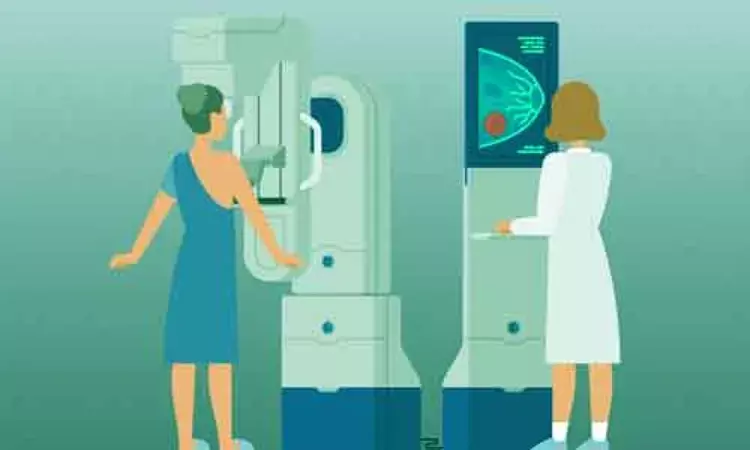- Home
- Medical news & Guidelines
- Anesthesiology
- Cardiology and CTVS
- Critical Care
- Dentistry
- Dermatology
- Diabetes and Endocrinology
- ENT
- Gastroenterology
- Medicine
- Nephrology
- Neurology
- Obstretics-Gynaecology
- Oncology
- Ophthalmology
- Orthopaedics
- Pediatrics-Neonatology
- Psychiatry
- Pulmonology
- Radiology
- Surgery
- Urology
- Laboratory Medicine
- Diet
- Nursing
- Paramedical
- Physiotherapy
- Health news
- Fact Check
- Bone Health Fact Check
- Brain Health Fact Check
- Cancer Related Fact Check
- Child Care Fact Check
- Dental and oral health fact check
- Diabetes and metabolic health fact check
- Diet and Nutrition Fact Check
- Eye and ENT Care Fact Check
- Fitness fact check
- Gut health fact check
- Heart health fact check
- Kidney health fact check
- Medical education fact check
- Men's health fact check
- Respiratory fact check
- Skin and hair care fact check
- Vaccine and Immunization fact check
- Women's health fact check
- AYUSH
- State News
- Andaman and Nicobar Islands
- Andhra Pradesh
- Arunachal Pradesh
- Assam
- Bihar
- Chandigarh
- Chattisgarh
- Dadra and Nagar Haveli
- Daman and Diu
- Delhi
- Goa
- Gujarat
- Haryana
- Himachal Pradesh
- Jammu & Kashmir
- Jharkhand
- Karnataka
- Kerala
- Ladakh
- Lakshadweep
- Madhya Pradesh
- Maharashtra
- Manipur
- Meghalaya
- Mizoram
- Nagaland
- Odisha
- Puducherry
- Punjab
- Rajasthan
- Sikkim
- Tamil Nadu
- Telangana
- Tripura
- Uttar Pradesh
- Uttrakhand
- West Bengal
- Medical Education
- Industry
Combo of DBT and 2D mammography better for breast cancer screening than DM alone: Study

Germany: Digital breast tomosynthesis (DBT) combined with synthesized 2D mammography leads to higher cancer detection rates and lower recall versus digital mammography (DM) alone, finds a recent study. The study was published in the journal European Radiology on 25th October 2021.
"Our study showed that diagnostic outcomes improved with the combo of DBT plus s2D compared to DM alone and emphasized on the value of the combo in breast cancer screening," the researchers wrote. "To our best knowledge, this is the first meta-analysis of biopsy rates, PPV-2, and PPV-3 in women screened with DBT plus s2D compared to DM alone."
Previous studies have shown DBT plus DM to be problematic in screening due to increased radiation by double exposure. s2D calculated from DBT datasets at no additional dose appears a sensible alternative compared to adding DM. A team led by Sylvia H. Heywang-Köbrunner, FFB gGmbH, Munich, Germany, therefore, aimed to evaluate the screening performance outcomes in women screened with DBT plus s2D compared to DM alone.
For this purpose, the researchers searched the online databases from January 1, 2010, to September 2, 2020. It included studies comparing DBT plus s2D to DM alone in breast cancer screening. They estimated pooled risk ratios (RR) for cancer detection rates (CDR), recall rates, interval cancer rates (ICR), biopsy rates, and positive predictive values for recalls (PPV-1), for biopsies recommended (PPV-2), and for biopsies performed (PPV-3).
Twelve papers covering 414,281 women were included from 766 records identified.
Key findings include:
- CDR is increased ([RR, 95% CI] 1.35, 1.20–1.52), recall rates are decreased (0.79, 0.64–0.98), and PPV-1 is increased (1.69, 1.45–1.96) when using DBT plus s2D compared to DM alone.
- ICR and biopsy rates did not differ, but PPV-2 respectively PPV-3 increased with DBT plus s2D (1.57, 1.08–2.28 respectively 1.36, 1.17–1.58).
- Overall RoB of studies was assessed to be low.
The researchers concluded, "results show improved diagnostic outcomes with DBT plus s2D compared to DM alone and underline the value of DBT in combination with s2D in breast cancer screening."
Reference:
Heywang-Köbrunner, S.H., Jänsch, A., Hacker, A. et al. Digital breast tomosynthesis (DBT) plus synthesised two-dimensional mammography (s2D) in breast cancer screening is associated with higher cancer detection and lower recalls compared to digital mammography (DM) alone: results of a systematic review and meta-analysis. Eur Radiol (2021). https://doi.org/10.1007/s00330-021-08308-8
Dr Kamal Kant Kohli-MBBS, DTCD- a chest specialist with more than 30 years of practice and a flair for writing clinical articles, Dr Kamal Kant Kohli joined Medical Dialogues as a Chief Editor of Medical News. Besides writing articles, as an editor, he proofreads and verifies all the medical content published on Medical Dialogues including those coming from journals, studies,medical conferences,guidelines etc. Email: drkohli@medicaldialogues.in. Contact no. 011-43720751


